Wildflower season is a magical time of year that offers opportunities for exploration and learning with kids. What better way to embark on a captivating adventure than by exploring the vibrant and enchanting world of wildflowers? Delighting in their colorful blossoms, delicate petals, and captivating fragrances, wildflower exploration offers a fantastic opportunity to inspire a love for nature in our young ones. Today, Austin/Chicago homeschooling mom of two, Tiana Kubik, will explore how to plan a wildflower adventure with your family and make it an engaging and educational experience.
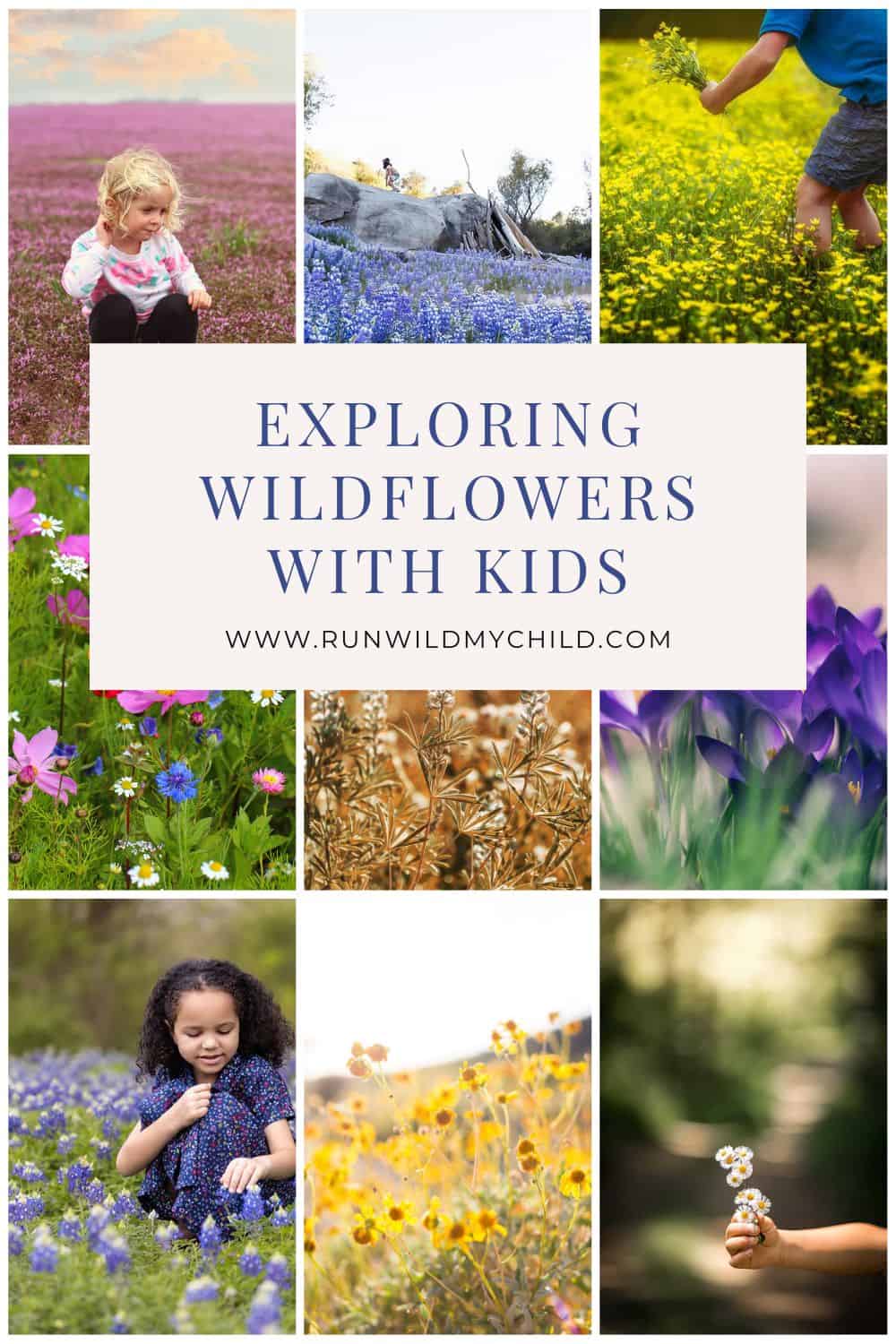
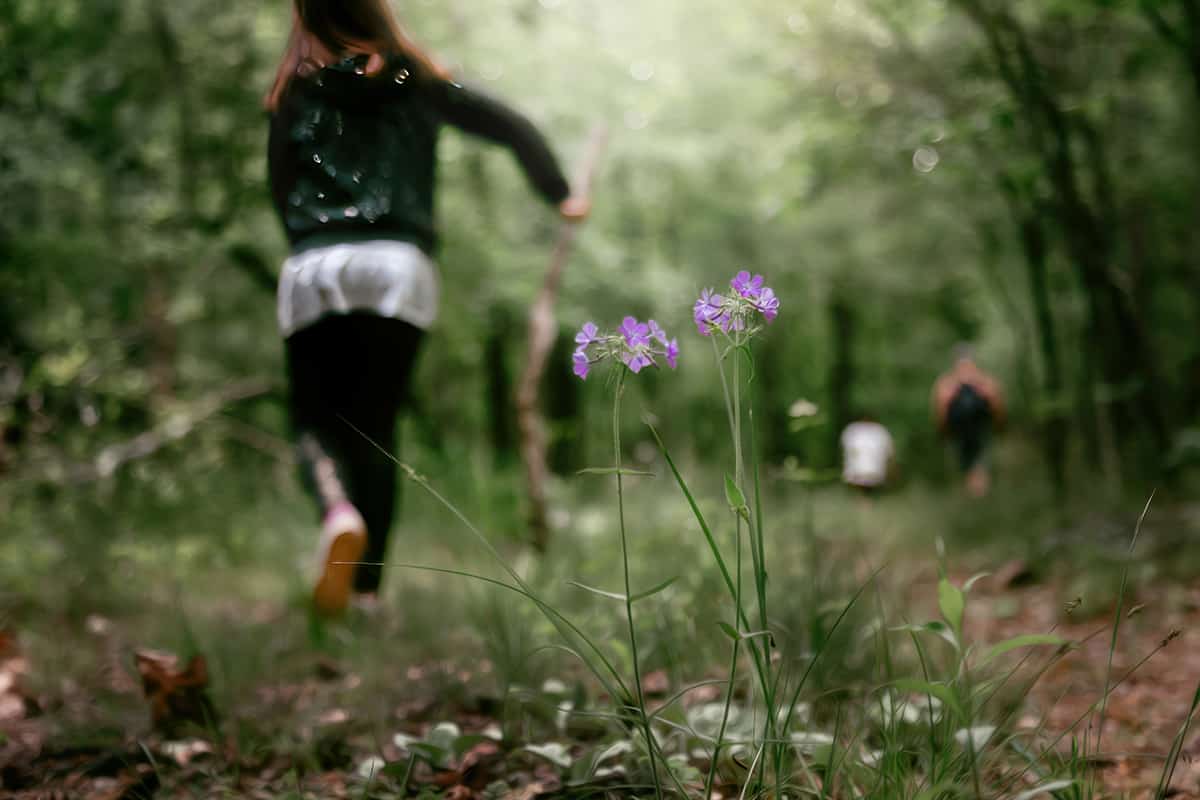
Learning about wildflowers with kids
Beyond their aesthetic appeal, wildflowers serve as exquisite gateways to learning about the environment, ecology, and the interconnected web of life. As children wander through fields and meadows, they not only witness nature’s artistry but also develop a profound understanding of the delicate balance that sustains our planet. It’s a great way to get outside, connect with nature, and learn about the environment.
In this blog post, we’ll delve into the joy of exploring wildflowers with kids, unraveling the numerous benefits it offers. From fostering a sense of wonder and curiosity to nurturing a deep appreciation for biodiversity, this outdoor activity is a delightful way to spend quality time with your children, while nurturing their connection with nature.
So, let’s embark on a blooming adventure, discovering the wonders that wildflowers have in store for us. Through engaging activities, valuable insights, and practical tips, we’ll guide you on an exploratory journey that will leave you and your children in awe of the natural world. So, grab your sun hats, put on your walking shoes, and let’s set off together to unravel the secrets of wildflower meadows!
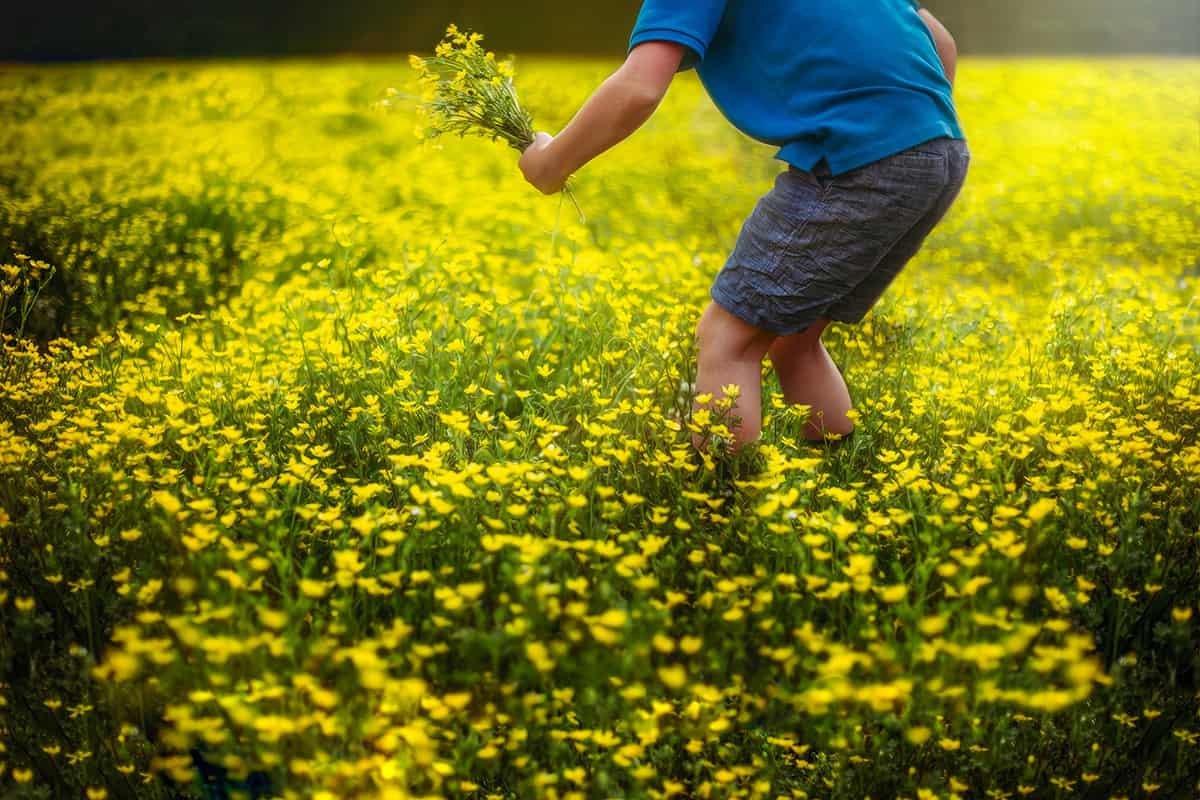
Planning a wildflower outing with kids
The first step in planning your wildflower adventure is to find the right location. Wildflowers can be found in various locations, such as meadows, parks, and nature reserves. You can research the best places to go on the internet or ask for recommendations from local nature enthusiasts. Local botanical gardens, nature preserves, or national parks often have designated wildflower areas. Consider the accessibility and safety of the location, ensuring it caters to children’s needs.
Once you have found a magical location, research the best time to visit and learn about the wildflowers you might encounter. Wildflower blooms vary depending on climate and weather patterns, so it’s essential to plan accordingly. For example, wildflowers bloom in different parts of the country at different times of the year. Look up field guides, online resources, and nature identification apps, or consult with local experts. Familiarize yourself with the common species in the region and their characteristics.
Finally, prepare for the trip. Make sure to pack sunscreen, hats, water, insect repellent, snacks, field guides, and comfortable walking shoes. Bring along a pocket microscope for closer inspections. Consider bringing a camera or a nature journal to document findings.
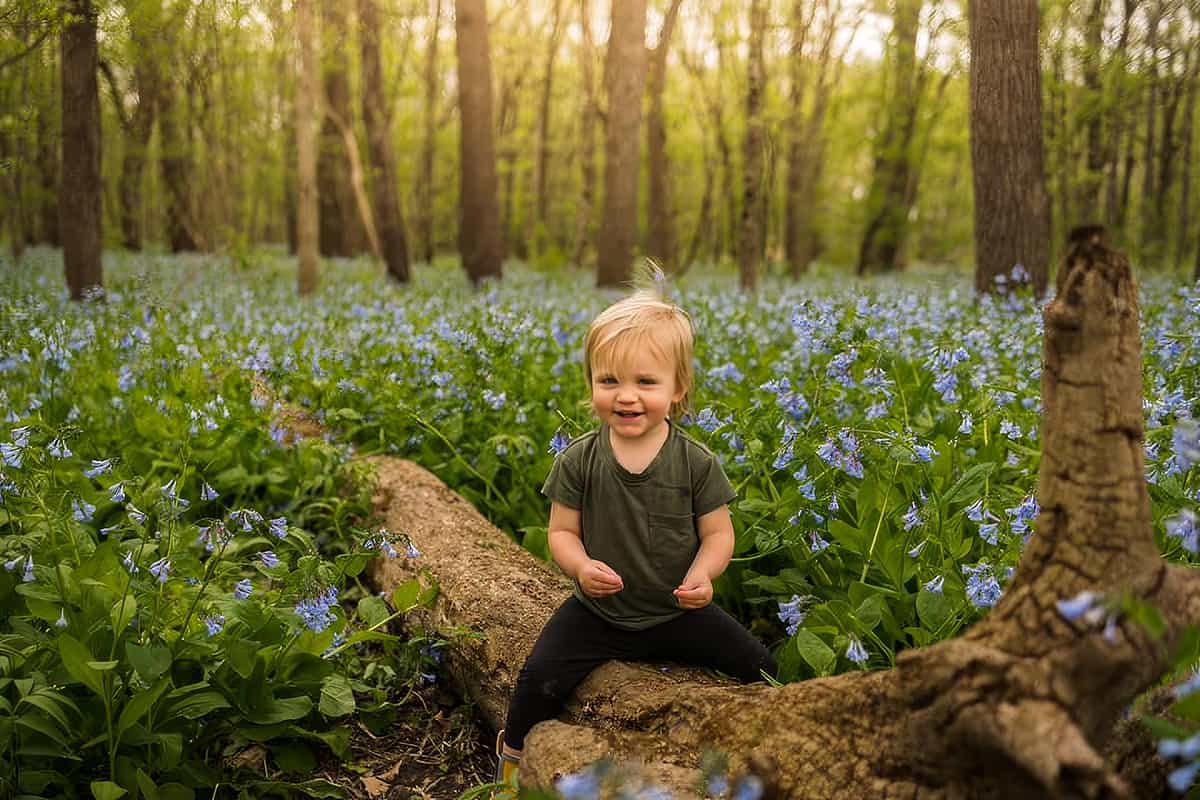 Photo Credit:@meghangarriott
Photo Credit:@meghangarriott
Exploring wildflowers with kids
When you arrive at your wildflower destination, there are a few things you can do to and activities your kids can engage in to amkae the experience enjoyable.
- Wildflower scavenger hunt – Create a scavenger hunt where children search for specific wildflower species or colors, or specific characteristics (e.g., a yellow flower, a flower with five petals). Let children search for and check off the items as they find them. This activity adds an element of excitement and encourages active exploration.
- Nature journal – Encourage them to observe and sketch flowers they find, noting their unique features. Teach them to identify key parts like petals, leaves, and stems.
- Observe – Slow down and encourage children to observe their surroundings. Allow them to explore, ask questions, and express curiosity. Let them discover insects, birds, or other small creatures that interact with wildflowers.
- Encourage sensory experiences – Encourage children to touch and smell the flowers gently. Let them experience the different textures, fragrances, and colors of the wildflowers. This sensory engagement enhances their connection with nature.
- Capture memories – Take photographs of both the flowers upclose and the kids with the flowers to document the wildflowers you discover. Encourage children to take their own photos of the things that they found most interesting or beautiful.
-
Discuss conservation and stewardship – Use the outing as an opportunity to talk about the importance of preserving wildflowers and their habitats. Teach children about the role wildflowers play in pollination, biodiversity, and the overall health of ecosystems.
- Create flower crowns or bracelets – Collect small, sturdy flowers with long stems to create flower crowns or bracelets. Teach children how to weave the stems together to form beautiful accessories. This hands-on activity allows them to showcase their creativity while appreciating the beauty of wildflowers.
- Play “Name That Flower” – Play a game where children take turns describing a wildflower they have seen without revealing its name. The others can try to guess the flower based on the description. This activity encourages observation skills and enhances their ability to identify different wildflowers.
Remember, the focus is on providing children with hands-on experiences that foster their curiosity, creativity, and connection with nature. By incorporating these engaging activities into your wildflower explorations, you’ll make the journey even more enjoyable and memorable for your little adventurers.
 Photo Credit:@meghangarriott
Photo Credit:@meghangarriott
Plant identification apps for wildflowers
For identification, here are four popular plant-identifying apps:
- PlantSnap – This app uses artificial intelligence to identify over 600,000 plants from all over the world. Users can take a picture of a plant, and the app will provide information on the plant’s name, care tips, and other details.
- iNaturalist – This app allows users to identify and track plants, animals, and other living things in their local environment. Users can take pictures of plants and upload them to the app, where the community can help identify the plant and provide information on its care.
- PictureThis – This app also uses artificial intelligence to identify plants and provide information on their care. Users can take a picture of a plant or upload a photo from their camera roll, and the app will provide information on the plant’s name, characteristics, and growing tips.
- Seek by iNaturalist – This app uses image recognition technology to help identify plants, animals, and other organisms. Users can take a picture of a plant, and the app will identify it and provide information on its characteristics, habitat, and other details. Seek also offers challenges and badges to encourage users to explore the natural world.
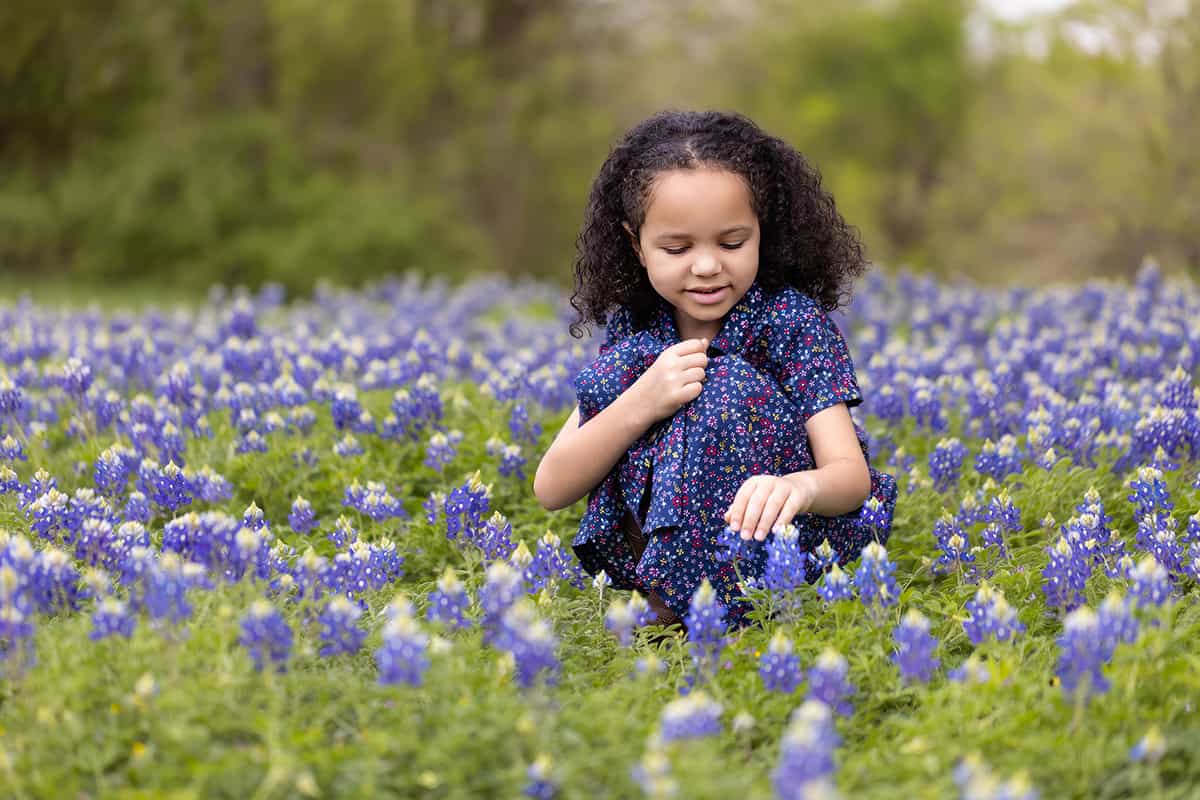 Photo Credit: @usalongtheway
Photo Credit: @usalongtheway
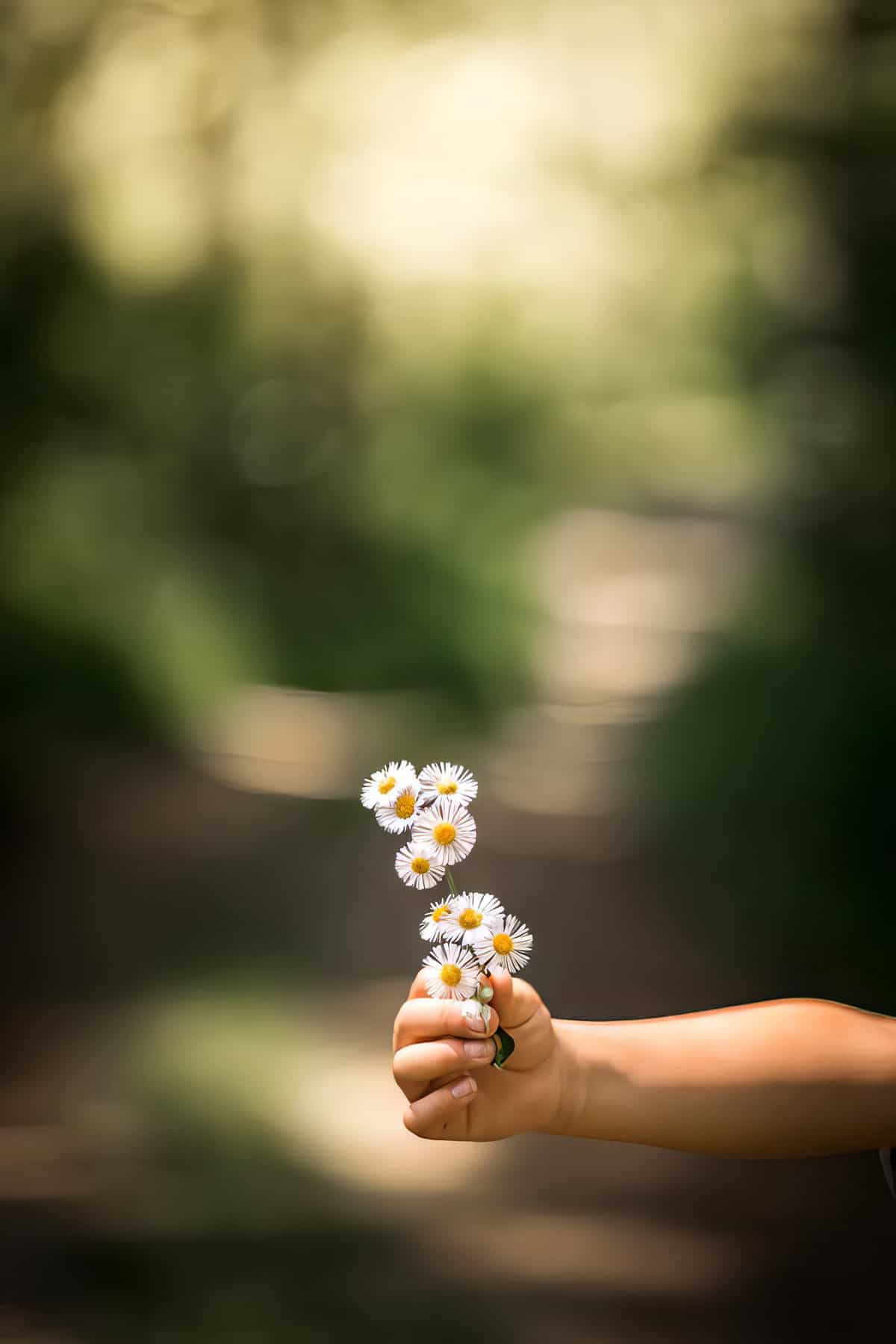 Photo Credit: @meghangarriott
Photo Credit: @meghangarriott
Wildflowers provide learning opportunities
Wildflower season provides an excellent opportunity for children to learn about science, the environment, and history. You can explain the science behind how wildflowers grow and their role in the ecosystem. Wildflowers play a crucial role in the ecosystem by providing food and shelter for various animals and insects. Pollinators, such as bees and butterflies, rely on wildflowers for food and are essential for plant reproduction. Teach your children about the importance of pollinators and their role in maintaining a healthy ecosystem.
By observing and studying wildflowers, children can learn about plant anatomy, including the different parts of a flower (petals, stamens, pistils, etc.), leaf structures, and root systems. They can explore the process of pollination and understand the importance of flowers in reproduction. Encourage children to ask questions about plant life cycles, adaptations, and the diversity of plant species they encounter.
Wildflowers also have a rich cultural and historical significance. They have been used for centuries for medicinal and culinary purposes. You can share stories about how wildflowers were used by indigenous people or the pioneers who settled in the area. For example, wildflowers were used to make teas and remedies to treat various ailments. Sharing this knowledge will help children appreciate the cultural significance of wildflowers and deepen their understanding of history.
Finally, engaging with wildflowers offers an opportunity to discuss broader environmental topics with children. Teach them about the threats to wildflower habitats, such as habitat loss, climate change, and invasive species. Help them understand the significance of conservation and the role they can play in protecting natural areas and preserving wildflower diversity.
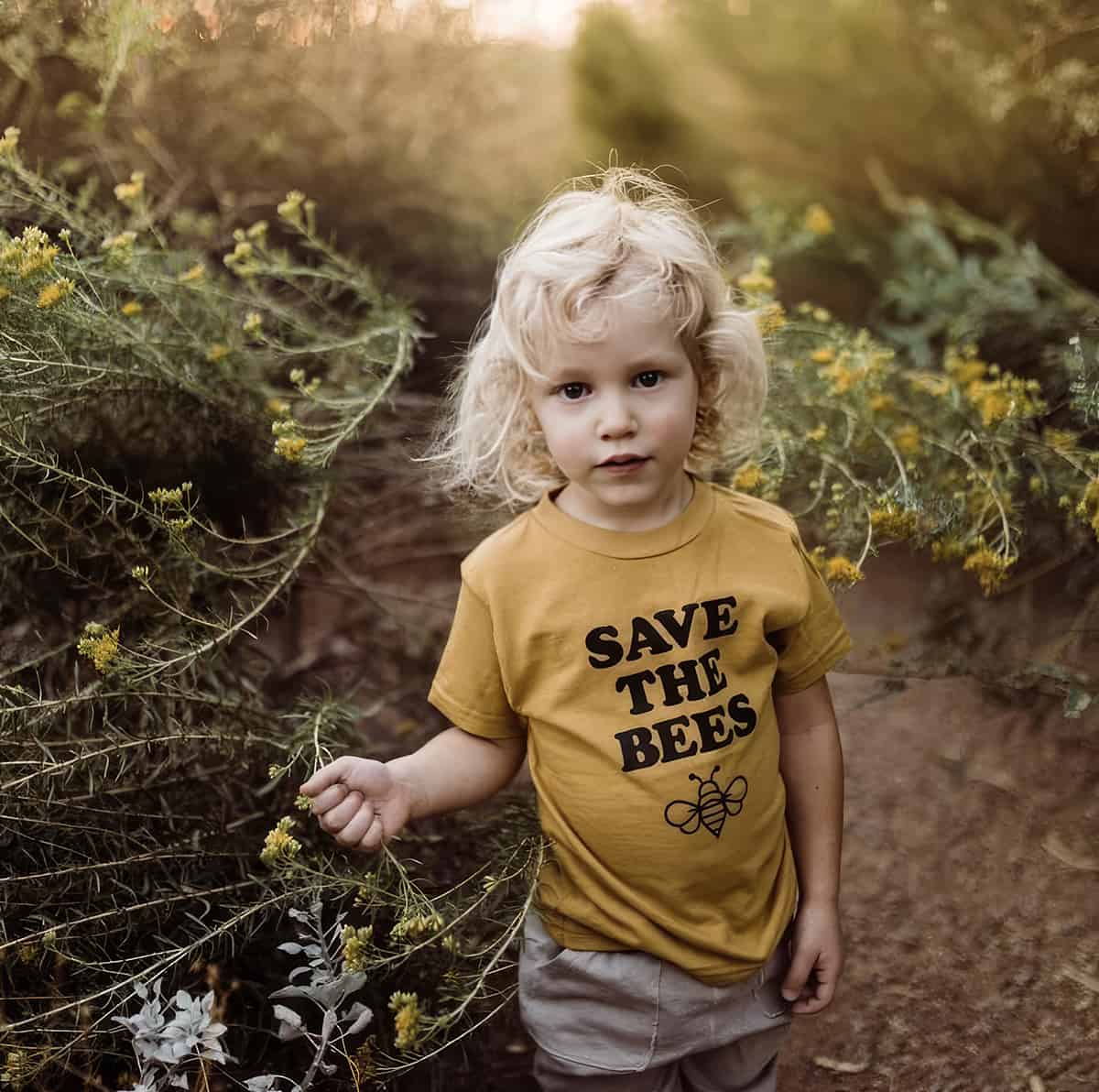 Photo Credit: @raising_little_naturalists
Photo Credit: @raising_little_naturalists
Preserving the wildflowers
When exploring and enjoying wildflowers, it’s crucial to be environmentally responsible and show care and consideration for nature. Remind your kids to stick to designated paths to avoid trampling the flowers or disturbing their habitat. Practice “Leave No Trace” principles by carrying out any waste or litter, including food wrappers, bottles, or tissues. Keep the environment clean and leave it as you found it, ensuring no negative impact on the natural habitat of wildflowers.
Be mindful not to introduce or spread invasive species while exploring wildflower areas. Invasive plants can outcompete native wildflowers and disrupt the delicate balance of the ecosystem. Learn to identify invasive species in your region and report any sightings to the appropriate authorities.
If you want to pick flowers for crafts or decoration, make sure to do so in moderation and with respect for the environment. Consider the impact of your actions and only take a few flowers from an area, leaving enough for the plants to continue to thrive and support wildlife.
Supporting the preservation of wildflowers and their habitats can also be done by donating to conservation organizations or volunteering at a local nature reserve.
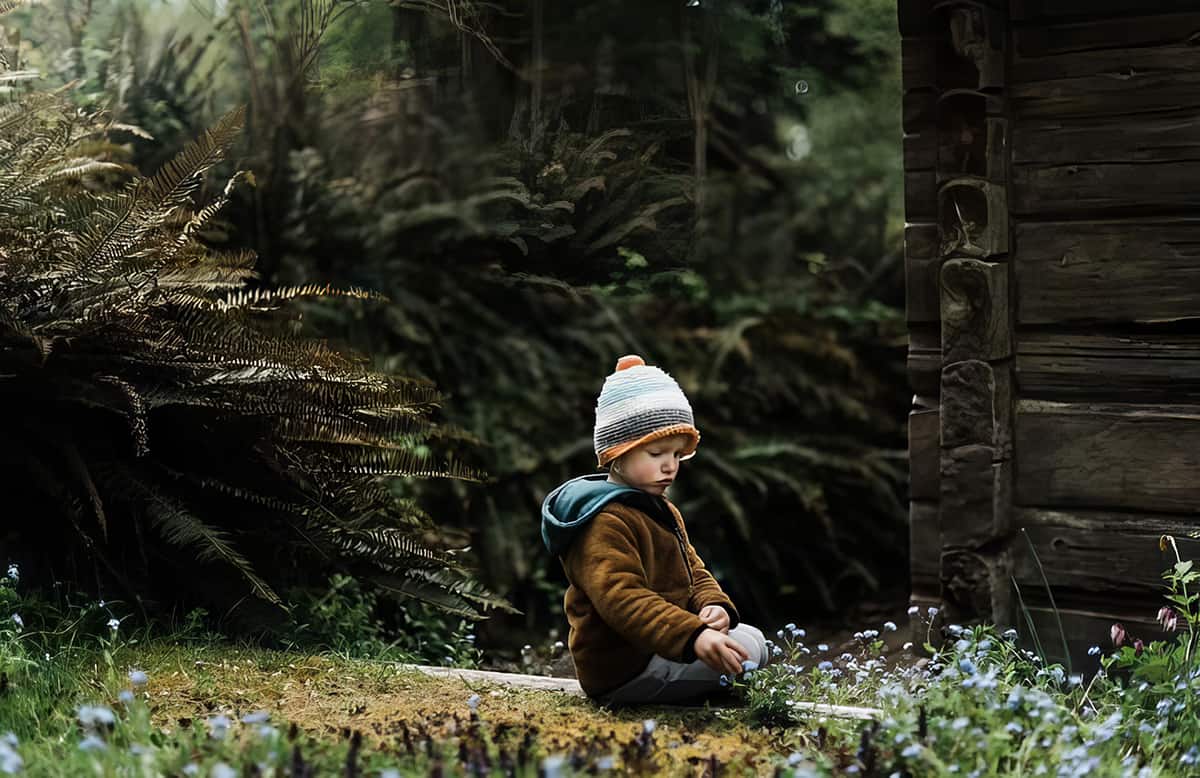 Photo Credit: @raising_little_naturalists
Photo Credit: @raising_little_naturalists
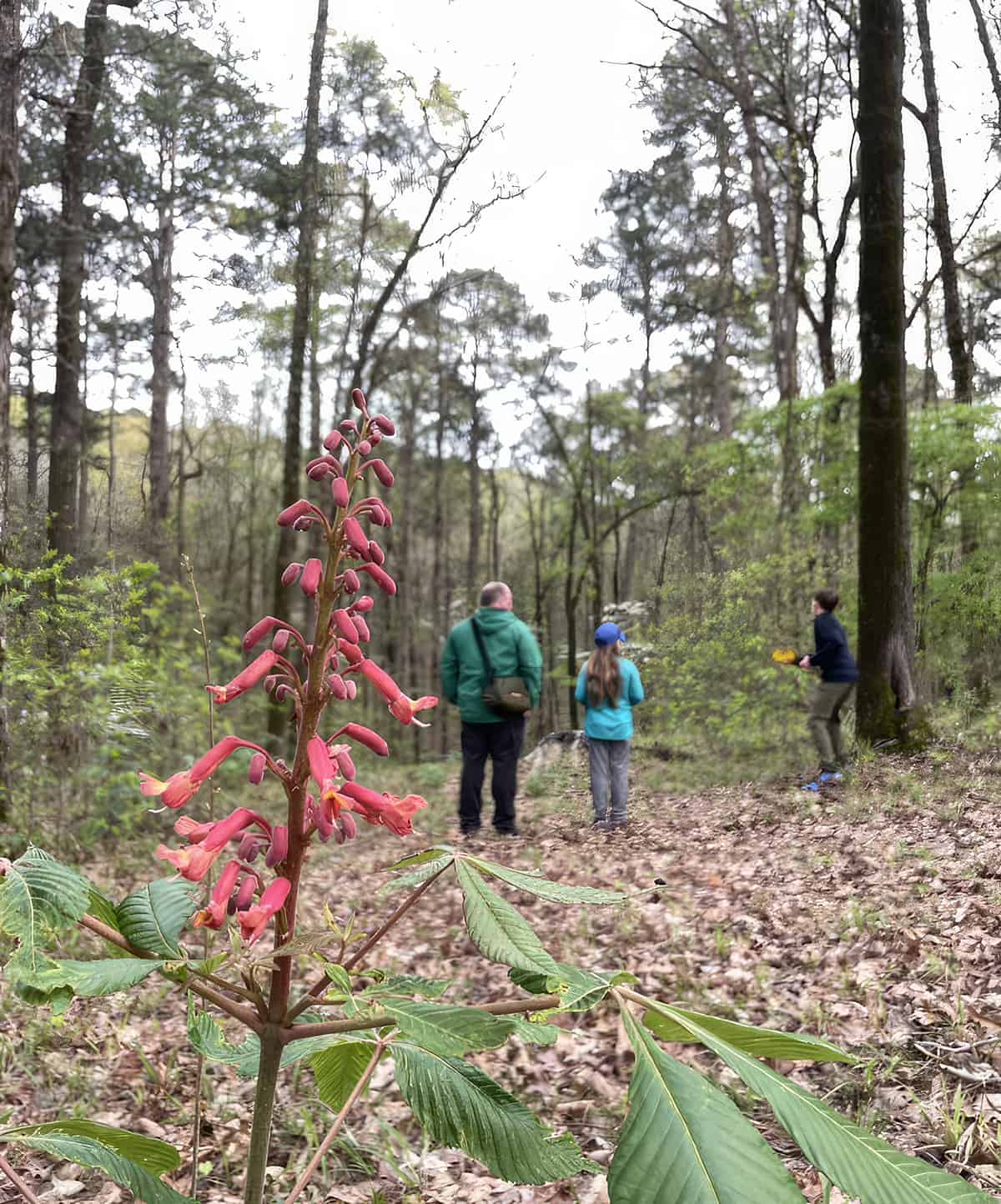 Photo Credit: @coleyraeh
Photo Credit: @coleyraeh
Seasons for wildflowers
Wildflowers come in a variety of types and bloom at different times depending on their location. If you’re curious about when you can find your favorite wildflower, take a look at the list below.
January – March:
- California Poppies (Eschscholzia californica) bloom in southern California and the Southwest
- Desert Marigold (Baileya multiradiata) blooms in the southwestern US
- Purple Coneflower (Echinacea purpurea) blooms in the southeastern US
- Snowdrops (Galanthus nivalis) bloom in the Pacific Northwest and parts of the Southeast
- Witch Hazel (Hamamelis spp.) blooms across the eastern and central parts of the US
April:
- Bluebonnets (Lupinus texensis) bloom in Texas
- Dogwoods (Cornus florida) bloom in the eastern US
- Indian Paintbrush (Castilleja spp.) blooms in the western US
- Prairie groundsel (Packera plattensis) Midwest US
- Bluebells (Hyacinthoides non-scripta) bloom in the Midwest
May:
- Lupines (Lupinus spp.) bloom in the western US
- California Lilac (Ceanothus spp.) blooms in California
- Redbuds (Cercis spp.) bloom in the eastern US
- Butterweed (Packera glabella) blooms in the Midwest
- Fleabane (Erigeron philadelphicus) blooms in Northern United States
- Goldenbush (Isocoma menziesii) blooms in Arizona and Southwest
- Wild violets (Viola papilionacea and Viola Sororia) bloom across the Midwest
- Foxglove (Digitalis purpurea)
June:
- Fireweed (Chamerion angustifolium) blooms in Alaska and the Pacific Northwest
- Black-eyed Susans (Rudbeckia hirta) bloom in the eastern United States
- Columbine (Aquilegia spp.) blooms in the western United States
- Red Buckeye (Aesculus pavia) blooms in the Midwest
- Purple Cone Flower (Echinacea purpurea) bloooms in Midwest prairies in the summer
July:
- Daylilies (Hemerocallis spp.) blooms in the eastern United States
- Sunflowers (Helianthus spp.) blooms in the central United States
- Queen Anne’s Lace (Daucus carota) blooms in the eastern United States
- Cardinal flower (Lobelia cardinalis) is a native plant of North, South, and Central America
August:
- Goldenrod (Solidago spp.) blooms in the eastern and central United States
- Coneflowers (Echinacea spp.) bloom in the central and eastern United States
- Milkweed (Asclepias spp.) blooms in the eastern United States
September – October:
- Asters (Symphyotrichum spp.) bloom in the eastern United States
- Goldenrod (Solidago spp.) blooms in the central and eastern United States
November – December:
- Holly (Ilex spp.) blooms in the southeastern United States
- Christmas Cactus (Schlumbergera spp.) blooms in the southeastern United States
- Poinsettias (Euphorbia pulcherrima) bloom in the southwestern United States
Please note that the exact bloom times for wildflowers can vary from year to year depending on weather patterns, so it’s always a good idea to check local conditions before planning a trip to see them.
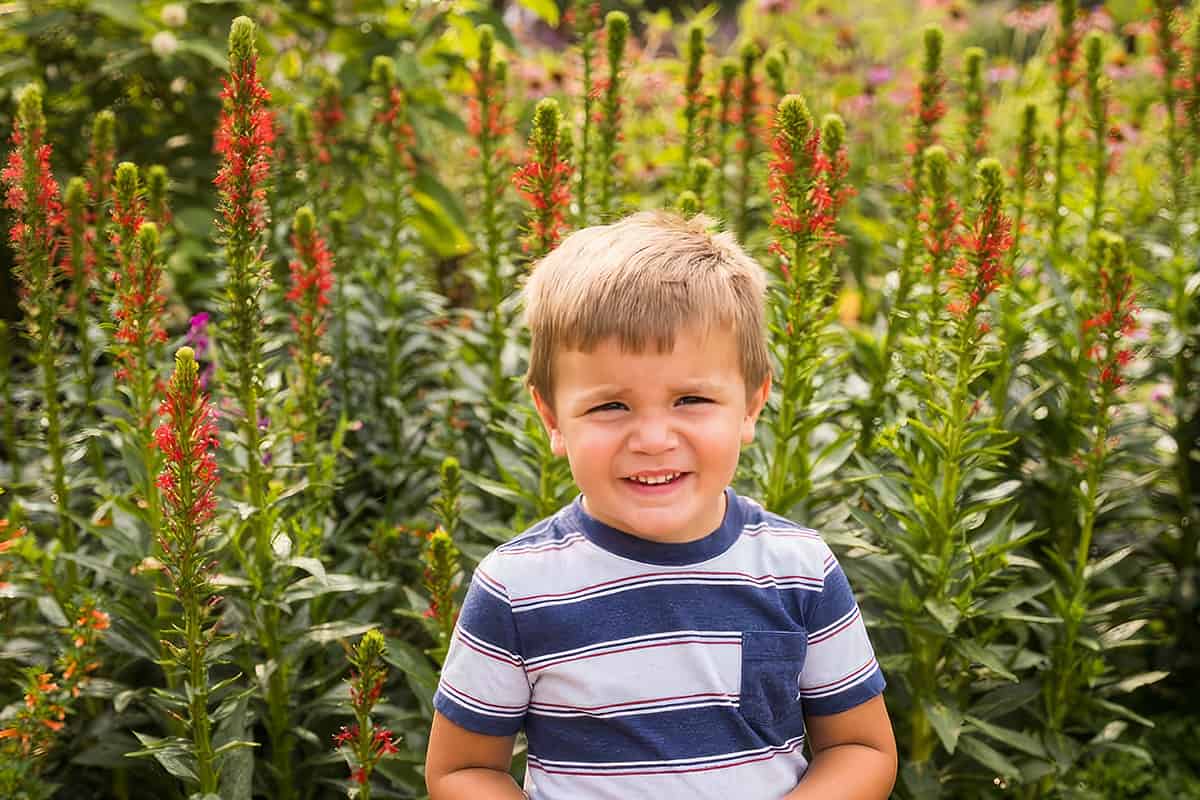 Photo Credit: @meghangarriott
Photo Credit: @meghangarriott
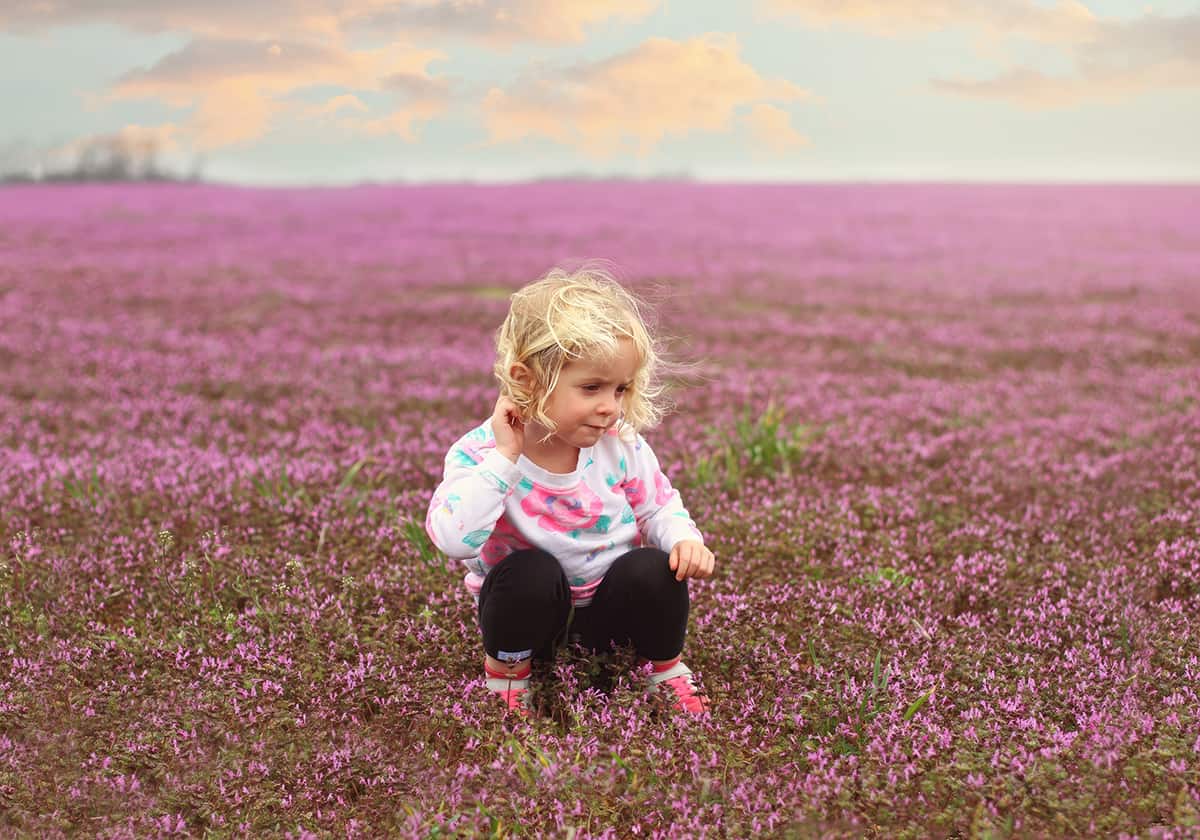 Photo Credit: @sara_mccarty
Photo Credit: @sara_mccarty
Best wildflower books for kids
Reading books about wildflowers can help children learn about the different types of flowers, their characteristics, and the habitats they thrive in. From picture books to chapter books, there are numerous options for children’s books about wildflowers that can spark their imagination and deepen their appreciation for nature. Here are some captivating books about wildflowers that are perfect for young readers.
- “Miss Lady Bird’s Wildflowers” by Kathi Appelt – This book tells the story of Lady Bird Johnson’s efforts to beautify America’s highways with wildflowers, and is filled with fun facts and beautiful illustrations.
- “The Reason for a Flower” by Ruth Heller – This book explains the different parts of a flower and their functions in simple language that young children can understand.
- “The Tiny Seed” by Eric Carle – In this classic book, a tiny seed travels through different environments and faces various challenges on its way to becoming a beautiful flower.
- “A Seed Is Sleepy” by Dianna Hutts Aston – This book explores the different types of seeds found in nature, from small and sleepy to big and showy.
- “Wangari’s Trees of Peace: A True Story from Africa” by Jeanette Winter – This book tells the true story of Wangari Maathai, who worked to plant trees and protect the environment in Kenya.
- “The Secret Garden” by Frances Hodgson Burnett – While not strictly about wildflowers, this classic book features a beautiful garden filled with flowers and other plants, and teaches the importance of nurturing and caring for nature.
- “Wildflowers, Blooms & Blossoms” by Diane Burns – This book features over 30 different wildflowers, with beautiful illustrations and interesting facts about each one.
- “The Flower Alphabet Book” by Jerry Pallotta – This fun book uses the letters of the alphabet to introduce young children to different types of flowers and their names.
- “From Seed to Plant” by Gail Gibbons – This book explains the process of how plants grow and reproduce, from seed to flower.
- “The Adventures of Lily Lapp” series by Mary Ann Kinsinger – This series of books follows a young Amish girl named Lily Lapp as she learns about nature and the world around her, including the wildflowers that grow in the fields near her home.
- “The Lorax” by Dr. Seuss – While not strictly about wildflowers, this classic book teaches the importance of protecting the environment and preserving nature for future generations.
- “Flower Garden” by Eve Bunting – This charming book tells the story of a young girl and her father as they plant a flower garden together in the city.
- “In the Tall, Tall Grass” by Denise Fleming – This fun book explores the different plants and animals that can be found in a tall grass meadow, including colorful wildflowers.
- “Up in the Garden and Down in the Dirt” by Kate Messner – This book takes readers on a journey through a garden, exploring the different plants and animals that can be found above and below ground.
- “Flower Fairies of the Spring” by Cicely Mary Barker – This beautifully illustrated book features different flower fairies and their corresponding wildflowers, teaching children about the different types of flowers that bloom in the spring.
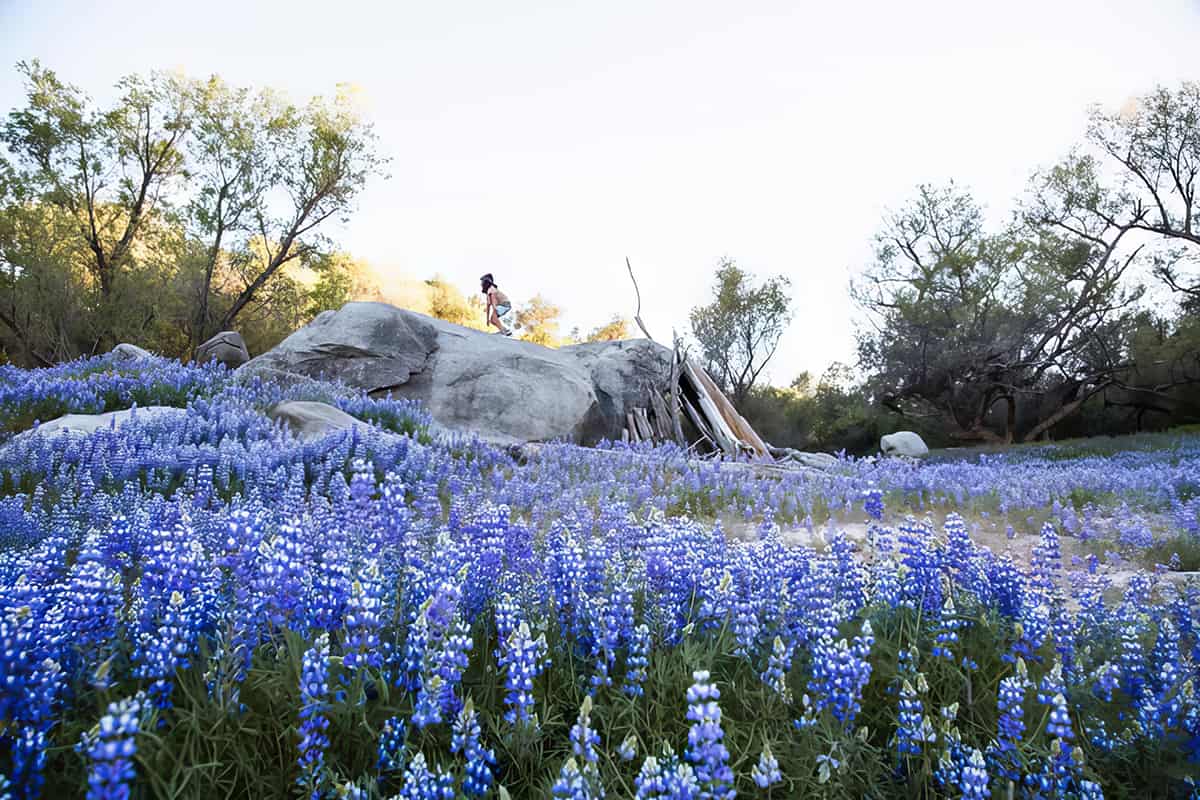 PhotoCredit: @roaminggonzalez
PhotoCredit: @roaminggonzalez
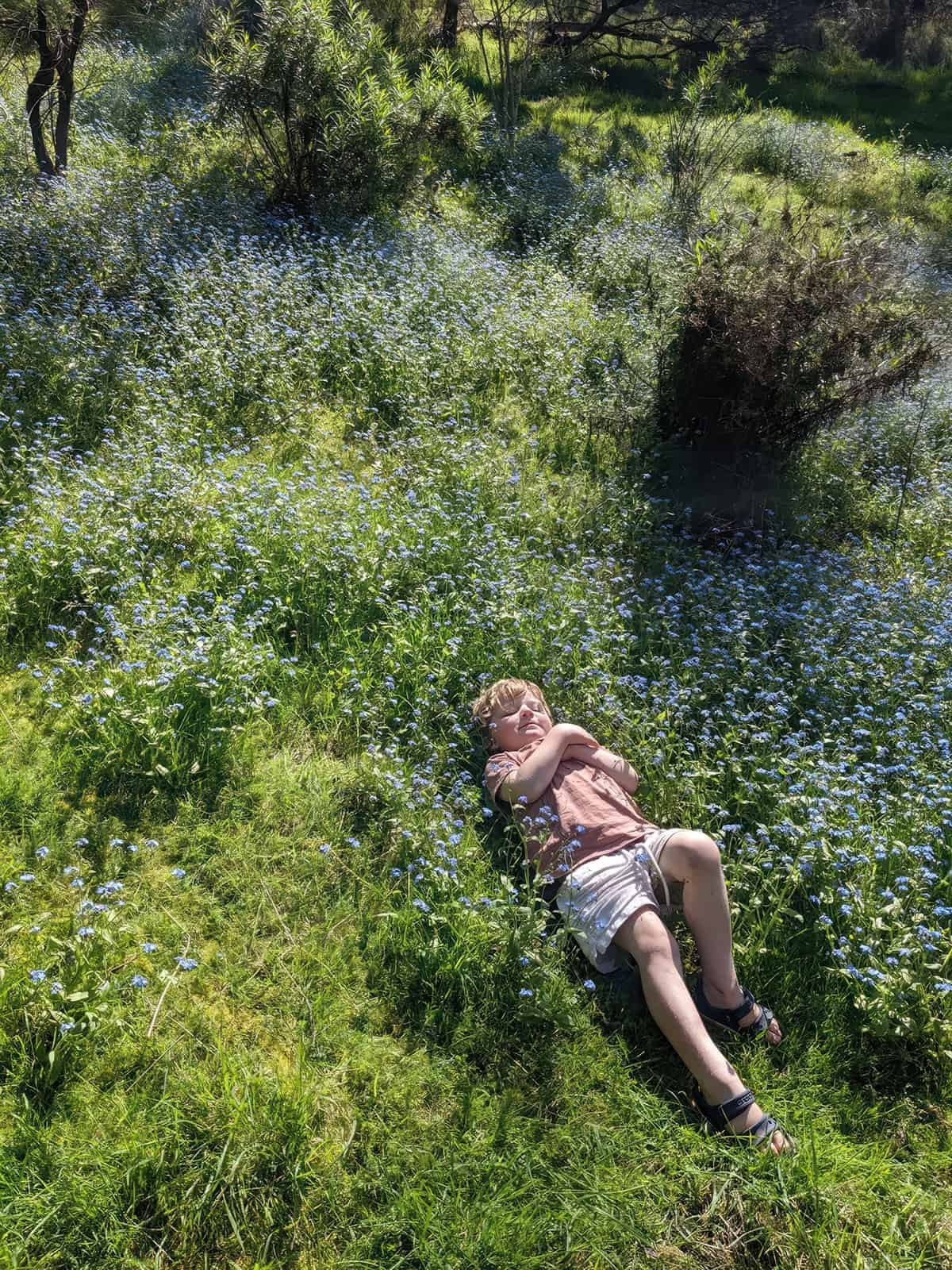 PhotoCredit: @tinyadventuresoften
PhotoCredit: @tinyadventuresoften
Ways to bring wildflowers to your home
Bringing more wildflowers to your home, garden, and neighborhood is a wonderful way to support local ecosystems, provide habitat for pollinators, and enhance the natural beauty of the surroundings. Be sure to select native wildflowers that are adapted to your region’s climate, soil conditions, and rainfall patterns. Native plants are well-suited to local ecosystems and require less maintenance. They also provide food and shelter for local wildlife, including bees, butterflies, and birds. Here are some ways to incorporate wildflowers into your daily life:
Create a wildflower garden or meadow
Designate an area in your garden or yard for a wildflower garden or meadow. Prepare the soil by removing weeds and adding organic matter if needed. Scatter wildflower seeds or plant seedlings, following the recommended spacing and depth for each species. Water regularly until established.
Use seed bombs or seed mixes
Seed bombs or seed mixes are convenient ways to introduce wildflowers in your neighborhood or community. Create seed bombs by mixing wildflower seeds with clay and compost, then distribute them in areas that could benefit from more natural beauty. Seed mixes can be scattered in open spaces or along roadsides.
Encourage pollinators
Incorporate elements into your garden or yard that attract and support pollinators, such as bees, butterflies, and hummingbirds. Include a variety of wildflowers with different bloom times and nectar-rich flowers. Add features like shallow water sources, bee houses, and rocks for basking or sunning to create a pollinator-friendly environment. For more, check out this post on how to make a DIY pollinator/butterfly garden with kids.
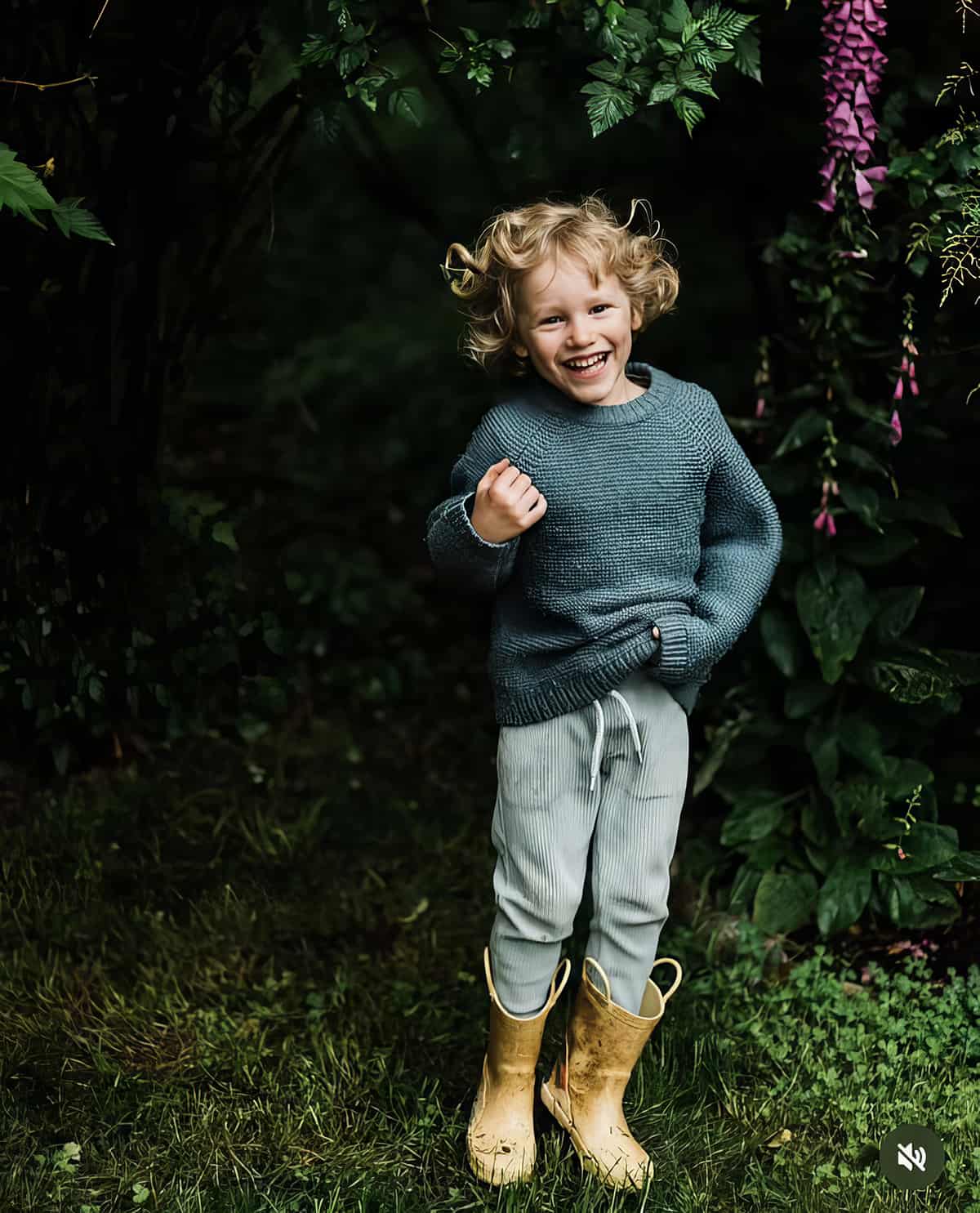 Photo Credit: @raising_little_naturalists
Photo Credit: @raising_little_naturalists
Teaching kids about wildflowers
Wildflower season is a wonderful way to get outside, connect with nature, and learn about the environment with your kids. Planning a wildflower adventure involves finding the right location, researching the best time to visit, and preparing for the trip. Exploring the wildflowers involves observing and appreciating the flowers, identifying different types of wildflowers, and engaging in fun activities.
Wildflower season also offers opportunities for learning about science, history, and culture. It’s essential to be environmentally responsible when exploring wildflowers by staying on designated paths and supporting conservation efforts. By taking the time to plan and enjoy a wildflower adventure with your family, you can create lasting memories and instill a love of nature in your children.

About the author
A city girl through and through, Tiana Kubik wasn’t always thrilled with outdoor adventures. However, learning the importance of nature + play through her journey to a Master’s in Early Childhood Education changed her heart. She still prefers the hustle and bustle of city life, and alternates between Chicago and Austin. She also has learned to love all that nature is and gives. Tiana has discovered unbelievably amazing North American destinations by traveling in a DIY converted Sprinter Van with her husband and two kids. She looks forward to new adventures and discoveries every day.
You can find more from Tiana in the following online locations:
Instagram: @usalongtheway
RWMC Posts: Tiana Kubik
The post Exploring Wildflowers with Kids appeared first on RUN WILD MY CHILD.
